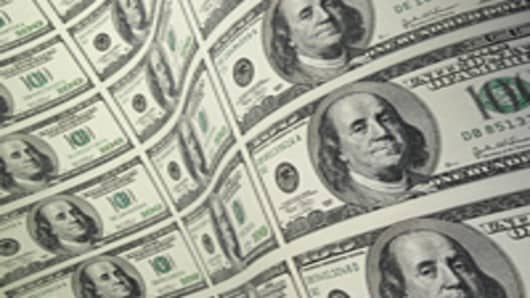Small-cap stocks usually lead the economyout of recessions and this one has been no exception, but stock marketleadership looks ready to turn.
So far this year, the Russell 2000 small-cap index is up 12.5 percent—part of a 103-percent gain from its March 2009 low—while the S&P 500 is up only 5 percent.
Small-cap stocks—companies with a market capitalization under $2 billions— usually suffer major hits to their earnings and valuations during recessions, such as a 34-percent decline for the Russell in 2008.
“When they come back, you get the double whammy,” says Richardson.
Over time, however, small caps have clearly outperformed large caps. posting average annual gains of 11.8 percent and 9.8 percent, respectively. since 1926.
“Investors want to be compensated for small caps greater risks," says Jeremy Zirin, chief equity strategist at UBS Wealth Management.
And they have this time around. Many small-caps sectors are up significantly in the past year—industrials, consumer staples, technology and health care. Consumer staples, for instance, are up 24 percent.
Mergers and acquisitions also helped “They were across the board—technology, energy, materials.” says Richardson,"
Now, however, small caps appear to be running out of fuel, say equity strategists.
Small caps are being weighed down by the US economy’s sluggish growth.
“I worry about smallcap valuations now,” says Richardson. “There will be some violent reversals. You need a strong stomach.”
“We favor larger companies,” says Zirin. “They’re trading at a discount."
High-quality big caps with strong finances can excel now, goes the thinking; such companies have cut costs dramatically and profitshave sprung back to almost peak levels, despite tepid growth, says Zinn. About$2 trillion in cash on the books doesn’t hurt either.
Global forces are also favorable and likely to provide a needed tail wind:
Strong growth in emerging countries that use supplies made by big, multinational companies will helps sales.
“The weak dollar benefits large caps with businesses overseas,” says Duncan Richardson, chief equity investment officer at Eaton Vance in Boston, and a large-cap fan. He sees the group gaining as much as 50 percent due to “promising valuations.”
Zirin thinks that consumer-staples companies can especially benefit, which includes Coca Colaand Colgate Palmolive . They grow their dividends 10 percent each year, he adds, which is more attractive than a 10-year Treasury. Zirin is also overweight in technology and utility stocks.
Joe Battipaglia, market strategist at Stifel Nicolaus & Co., also likes big caps. He favors multinationals like Exxon Mobil, Apple , Clorox and Cisco .
“Go with global franchises.," says Battipaglia. “I like anything except financials."
The sluggish U.S. labor market is the main worry. “Job-producing industries aren’t as robust as in the past,” says Battipaglia. “But places like Asia can better simulate the economy.”
“For now, large caps will be very productive," adds Richardson. "And their growth is discounted.”



